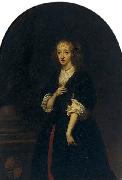Porslinet engros- Olja måleriet Engros- Måleriet Porslinet |
|||||||||||

|
|||||||||||
|
|
|
||||||||||||||
|
caspar netscher
Caspar (or Gaspar) Netscher (Heidelberg, 1639 ?C Den Haag, January 15, 1684) was a Dutch portrait and genre painter. He was a master in depicting oriental rugs, silk and brocade and introduced an international style to the Northern Netherlands. Little is know of Netscher's early years. According to Arnold Houbraken's 17th century biographical study of Dutch painters he was born in Heidelberg or Prague. His father Johann Netscher probably was a sculptor from Stuttgart who died in Poland when he was two years of age. It is also suggested that Caspar may have been the son of a Rotterdam painter. His mother, fleeing from the dangers of a civil war, carried him to Arnhem. On her way two of her children died. In Arnhem he was adopted by a physician named A. Tullekens. At first he was destined for the profession of his patron, but owing to his great aptitude for painting he was placed under a local artist named Hendrick Coster, and in 1654 became a student of Ter Borch in Deventer, who had family connections to Tullekens. He was Ter Borch's most gifted pupil, probably worked as an assistant as well and he appears several times as a model on Ter Borch's paintings. The Lace-Maker by Caspar Netscher (1662), oil on canvas, 33 x 27 cm. Wallace Collection, LondonIn 1658 he set out for Italy to complete his education there. However, he didn't get farther south than Bordeaux that fall, where he married Margaretha Godijn in 1659. There he toiled hard to earn a livelihood by painting small cabinet pictures which are now highly valued on account of their exquisite finish. After moving to The Hague in 1662, possibly because of the prosecutions of Protestants, he turned his attention to portrait-painting. In this branch of his art was more successful. In 1668 he joined the Schutterij and Cosimo III de' Medici, traveling through the Netherlands bought four paintings. It is likely that Netscher knew the painters Frans van Mieris, Sr. (1635 -1681) and Gerard Dou, but it is certain that he knew the painter Gerrit de Hooch from The Hague as his wife gave her name to Gerrit's new born daughter Margarita in 1676, the event being witnessed by Caspar as well as his wife. He was patronized by William III, and his earnings soon enabled him to gratify his own taste by depicting musical and conversational pieces. |
||||||||||||||
|
|
||||||||||||||
|
||||||||||||||
|
|
||||||||||||||
| caspar netscher
Caspar (or Gaspar) Netscher (Heidelberg, 1639 ?C Den Haag, January 15, 1684) was a Dutch portrait and genre painter. He was a master in depicting oriental rugs, silk and brocade and introduced an international style to the Northern Netherlands. Little is know of Netscher's early years. According to Arnold Houbraken's 17th century biographical study of Dutch painters he was born in Heidelberg or Prague. His father Johann Netscher probably was a sculptor from Stuttgart who died in Poland when he was two years of age. It is also suggested that Caspar may have been the son of a Rotterdam painter. His mother, fleeing from the dangers of a civil war, carried him to Arnhem. On her way two of her children died. In Arnhem he was adopted by a physician named A. Tullekens. At first he was destined for the profession of his patron, but owing to his great aptitude for painting he was placed under a local artist named Hendrick Coster, and in 1654 became a student of Ter Borch in Deventer, who had family connections to Tullekens. He was Ter Borch's most gifted pupil, probably worked as an assistant as well and he appears several times as a model on Ter Borch's paintings. The Lace-Maker by Caspar Netscher (1662), oil on canvas, 33 x 27 cm. Wallace Collection, LondonIn 1658 he set out for Italy to complete his education there. However, he didn't get farther south than Bordeaux that fall, where he married Margaretha Godijn in 1659. There he toiled hard to earn a livelihood by painting small cabinet pictures which are now highly valued on account of their exquisite finish. After moving to The Hague in 1662, possibly because of the prosecutions of Protestants, he turned his attention to portrait-painting. In this branch of his art was more successful. In 1668 he joined the Schutterij and Cosimo III de' Medici, traveling through the Netherlands bought four paintings. It is likely that Netscher knew the painters Frans van Mieris, Sr. (1635 -1681) and Gerard Dou, but it is certain that he knew the painter Gerrit de Hooch from The Hague as his wife gave her name to Gerrit's new born daughter Margarita in 1676, the event being witnessed by Caspar as well as his wife. He was patronized by William III, and his earnings soon enabled him to gratify his own taste by depicting musical and conversational pieces. Portrait of Jacoba Bicker (1640-1695); wife of Pieter de Graeff (1638-1707), Lord of Zuid-Polsbroek, Purmerland and Ilpendam, Schepen of Amsterdam cjr |
||||||||||||||
|
Related Paintings to caspar netscher :. |
||||||||||||||
|
|
||||||||||||||
|
|
||||||||||||||
|
KOMMA I KONTAKT MED Oss |







